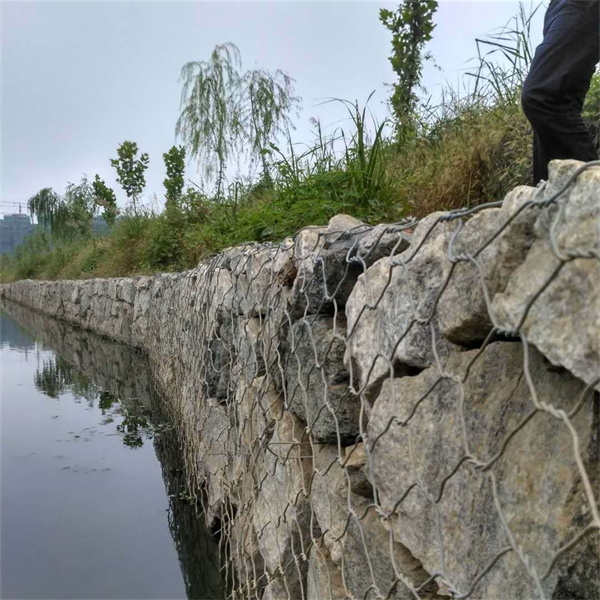Αυγ . 14, 2024 08:06 Back to list
Exploring the Benefits and Applications of Gabion Aggregate in Modern Construction Techniques
Gabion Aggregate An Innovative Solution for Sustainable Construction
In recent years, the construction industry has been in constant search of sustainable and environmentally friendly solutions to address various challenges, such as soil erosion, habitat destruction, and waste management. One innovative approach that has gained traction is the use of gabion aggregates. These modular structures, made of wire mesh filled with stones or other materials, offer numerous benefits for both civil engineering projects and landscaping applications.
Gabion baskets, initially used for flood protection and erosion control, have evolved into versatile construction materials. Their design allows for optimal drainage while maintaining structural stability, making them ideal for diverse applications. When it comes to gabion aggregates, the materials used within the baskets are crucial. Traditionally, stones are the primary fill; however, innovative practices now incorporate recycled materials, including concrete, bricks, and even industrial by-products. This not only reduces waste but also promotes the circular economy, aligning with sustainable development goals.
One of the primary advantages of gabion aggregates is their ability to adapt to various environmental conditions. When used in landscaping, they can help create aesthetically pleasing features like retaining walls, pathways, and decorative gardens. The porous nature of gabion structures allows water to percolate through, effectively reducing runoff and promoting groundwater recharge. This permeability is particularly beneficial in urban environments where impervious surfaces dominate, leading to increased flooding and soil degradation.
In addition to their environmental benefits, gabion aggregates play a significant role in erosion control. Their weight, combined with the interlocking nature of the stones, allows them to withstand strong forces from water and wind. Installing gabions along riverbanks, coastal areas, or steep slopes can significantly reduce soil erosion, preserving natural landscapes and protecting infrastructure from damage. Furthermore, they provide a habitat for various species, promoting biodiversity in disturbed areas.
gabion aggregate

Another notable advantage of gabion aggregates is their cost-effectiveness and ease of installation. Unlike traditional concrete structures, which often require extensive labor and machinery, gabions can be assembled quickly and efficiently, minimizing construction time and costs. This makes them particularly appealing for remote or challenging locations where conventional building materials may be difficult to transport.
Moreover, gabion aggregates are low-maintenance. Unlike concrete or masonry, which can suffer from cracking and require repairs, gabion structures are not susceptible to such issues. The natural materials used within the baskets tend to blend seamlessly into the environment, reducing the need for aesthetic upkeep. Over time, natural weathering can make the stones appear even more integrated into the landscape, enhancing the overall visual appeal.
Despite the numerous benefits, it is essential to consider some limitations of gabion aggregates. In certain cases, the wire mesh can corrode over time, especially in coastal environments where saltwater is present. To mitigate this, the use of high-quality stainless steel or PVC-coated mesh can significantly extend the lifespan of gabion structures.
In conclusion, gabion aggregates represent a forward-thinking approach to sustainable construction and environmental protection. Their versatility, cost-effectiveness, and minimal maintenance requirements make them an attractive option for a wide range of applications, from civil engineering to landscaping. As we continue to embrace sustainability in our infrastructure projects, gabion aggregates are set to play an increasingly vital role in preserving our natural environments and promoting resilience against climate change.
-
Why PVC Coated Gabion Mattress Is the Best Solution for Long-Term Erosion Control
NewsMay.23,2025
-
Gabion Wire Mesh: The Reinforced Solution for Modern Construction and Landscape Design
NewsMay.23,2025
-
Gabion Wall: The Flexible, Seismic-Resistant Solution for Modern Landscaping and Construction
NewsMay.23,2025
-
Gabion Wall Solutions: The Durable, Decorative, and Affordable Choice for Every Landscape
NewsMay.23,2025
-
Gabion Basket: The Durable and Flexible Alternative to Traditional Retaining Walls
NewsMay.23,2025
-
Gabion Basket: The Proven Solution for Slope Stability and Flood Control
NewsMay.23,2025
-
Versatility of Chain Link Fence Gabion
NewsMay.13,2025






